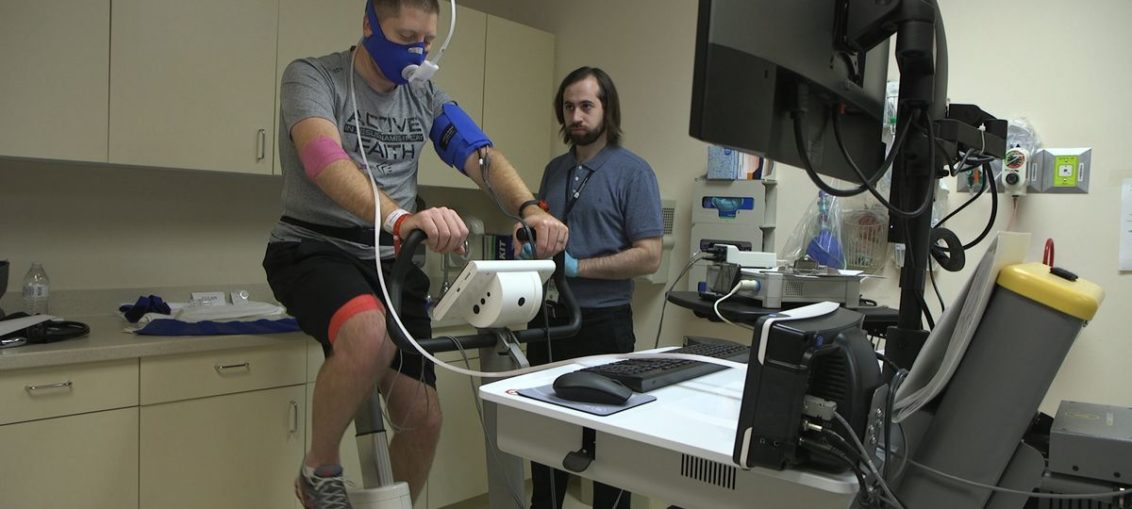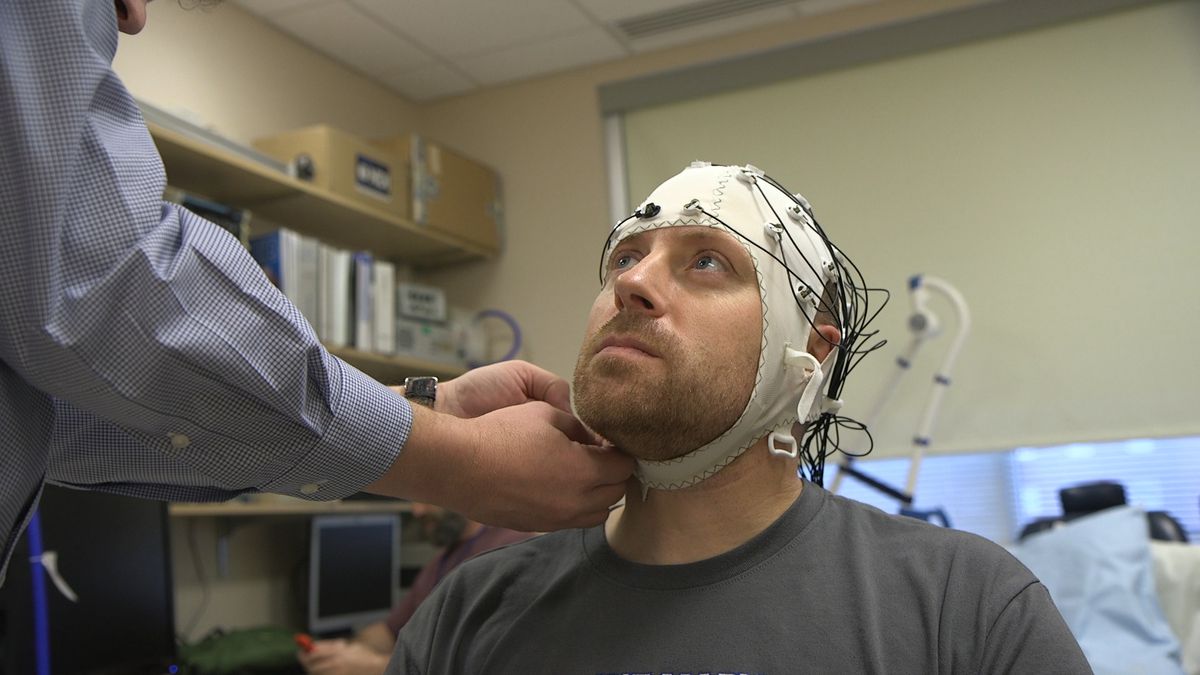
BETHESDA, Md. — Researchers hooked Zach Ault to medical displays as he slowly climbed onto a gymnasium bike. An invisible illness is sidelining this as soon as avid athlete and he knew the easy train would wipe him out — however Ault was pedaling for science.
Chronic fatigue syndrome is certainly one of drugs’s most vexing mysteries. Now medical doctors on the National Institutes of Health are utilizing volunteers like Ault for a novel research that pushes their limits in the hunt for what’s stealing all their vitality.
“I’ve tried to exercise my way out of this multiple times and I’ve put myself in deeper pits every time,” stated Ault, 36, of Paducah, Kentucky, as he started an almost two-week stint on the research-only hospital outdoors the nation’s capital.
“Chronic fatigue is kind of like they took the stopper out of the energy reserve tank,” and no quantity of sleep replenishes it, he stated.
Up to 2.5 million Americans are estimated to have what is thought formally as ME/CFS — it stands for “myalgic encephalomyelitis/chronic fatigue syndrome.” Its hallmark is profound fatigue, lasting greater than six months, that’s made even worse by any sort of exertion. Among different signs, sufferers additionally are likely to have issue staying upright or cognitive bother usually described as a “brain fog.”
Many go undiagnosed, misdiagnosed or dismissed by skeptical medical doctors. Decades after it was first acknowledged, scientists don’t know what causes it. There aren’t any permitted therapies, and even exams to assist analysis — and no approach to predict who will get well and who may have a extreme case that leaves them debilitated, even bed-bound, for years.
 Zach Ault is fitted with an EEG cap which makes use of electrodes to trace {the electrical} exercise of his mind, on the National Institutes of Health’s hospital in Bethesda, Maryland. Ault has ME/CFS, what as soon as was referred to as “chronic fatigue syndrome,” and is a part of a novel research aiming to uncover clues to how the mysterious illness steals sufferers’ vitality.AP
Zach Ault is fitted with an EEG cap which makes use of electrodes to trace {the electrical} exercise of his mind, on the National Institutes of Health’s hospital in Bethesda, Maryland. Ault has ME/CFS, what as soon as was referred to as “chronic fatigue syndrome,” and is a part of a novel research aiming to uncover clues to how the mysterious illness steals sufferers’ vitality.AP
“The ignorance about the condition just vastly dwarfs what we know about it,” stated Dr. Walter Koroshetz, director of NIH’s National Institute for Neurological Disorders and Stroke, which is main the analysis.
The NIH has greater than doubled funding — to greater than $14 million — for scientists across the nation to unravel the biology of ME/CFS since 2015, when the influential Institute of Medicine decried “a paucity of research.”
Part of the difficulty is that assorted signs make it onerous to check sufferers. A affected person advocacy group referred to as Solve ME/CFS Initiative is getting ready to open a registry the place sufferers can ship in medical info and blood and saliva samples to assist scientists increase analysis.
And illustrating the desperation for solutions, almost 500 sufferers have referred to as looking for to enroll in NIH’s personal research that’s placing a couple of dozen underneath the microscope, with a barrage of refined exams few hospitals can provide underneath one roof.
Like many such sufferers, Ault’s illness struck following a run-of-the-mill an infection in 2017. He’d been coaching for a half-marathon however after slightly day without work to get well, he tried to renew his runs and couldn’t. His analysis got here after months of exams for different explanations.
“His body had literally hijacked him and it wasn’t going to allow him to push through,” stated Anne Ault, his spouse.
Ault, a father of three, was lacking his children’ sporting and college actions, even his nightly wrestle together with his younger son. He needed to reduce his job, within the ministry, to half-days. When 16 hours of sleep a day made no distinction, his spouse, a pharmacist, hunted analysis alternatives.
Ault match the invoice for the NIH research, which is specializing in individuals who got here down with the illness after an an infection, of any type, inside 5 years. That preliminary an infection is lengthy gone however perhaps, the physique’s regular reactions to sickness went right into a…